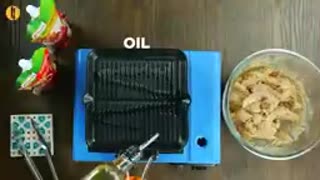Premium Only Content

How to Perform a Task Analysis
**Task Analysis** is a methodical process used to break down complex tasks into smaller, more manageable components to understand the steps, requirements, and potential challenges involved in performing a task. It’s widely used in fields like training design, user experience (UX), process improvement, and safety management. Below is a step-by-step guide:
---
### **Steps to Perform a Task Analysis**
#### **1. Define the Task to Be Analyzed**
- Clearly identify the task or process you want to analyze.
- **Be specific**: Focus on one well-defined task rather than broad goals.
- Example: "Assemble a piece of furniture," not "Improve manufacturing efficiency."
---
#### **2. Determine the Purpose of the Analysis**
- Understand why the task is being analyzed. Is it for:
- **Training Design**: To teach others how to perform the task?
- **Process Improvement**: To identify inefficiencies or risks?
- **System Design**: To develop user-friendly tools or interfaces?
- The purpose will influence how detailed your analysis needs to be.
---
#### **3. Gather Information**
- Collect data about how the task is currently performed. Use the following methods:
- **Observation**: Watch someone perform the task in a real-world setting.
- **Interviews**: Ask subject matter experts (SMEs) or experienced individuals to explain the steps.
- **Documentation Review**: Examine existing manuals, guidelines, or procedures.
- **Think-Aloud Protocol**: Ask the performer to verbalize their thought process while completing the task.
---
#### **4. Break Down the Task**
- Divide the task into **subtasks** or **steps**. For each step, document:
- **Actions**: What needs to be done?
- **Sequence**: In what order are the actions performed?
- **Tools/Resources**: What equipment, materials, or tools are required?
- **Conditions**: Under what circumstances is the task performed? (e.g., time constraints, environmental factors)
- **Outcomes**: What is the result of each step?
Example for "Making Coffee with a Coffee Maker":
- Step 1: Fill the water reservoir. (Action)
- Step 2: Insert the coffee filter. (Action)
- Step 3: Measure and add ground coffee. (Action)
---
#### **5. Identify Task Requirements**
- **Knowledge Requirements**: What does the performer need to know? (e.g., how to measure coffee)
- **Skill Requirements**: What skills are necessary? (e.g., steady hand for measuring)
- **Physical Requirements**: Are there physical demands? (e.g., lifting a water container)
- **Time Requirements**: How much time is needed for each step?
---
#### **6. Identify Potential Challenges**
- Pinpoint areas where errors, delays, or confusion might occur.
- Examples:
- Difficult-to-use tools or interfaces
- Ambiguous instructions
- Steps requiring specialized skills or training
---
#### **7. Visualize the Task**
- Create diagrams, flowcharts, or hierarchies to represent the task visually.
- Examples:
- **Hierarchical Task Analysis (HTA)**: Organizes tasks into a hierarchy, showing how subtasks relate to higher-level tasks.
- **Flowcharts**: Maps out the sequence and decision points in the task.
---
#### **8. Validate the Analysis**
- Review the breakdown with SMEs or experienced performers.
- Observe others performing the task to ensure your analysis aligns with reality.
---
#### **9. Develop Recommendations**
- Use the findings to make the task more efficient, safe, or user-friendly.
- Recommendations might include:
- Simplifying complex steps
- Improving tools or resources
- Creating clear instructions or training programs
---
#### **10. Document and Share Findings**
- Prepare a detailed report or guide, including:
- The task breakdown
- Identified challenges
- Proposed solutions or improvements
- Use visual aids like charts or images for clarity.
---
### **Types of Task Analysis**
1. **Cognitive Task Analysis (CTA)**:
- Focuses on mental processes like decision-making, problem-solving, and memory.
- Useful for tasks requiring complex thinking.
2. **Hierarchical Task Analysis (HTA)**:
- Breaks tasks into hierarchical levels, showing relationships between steps and subtasks.
3. **Behavioral Task Analysis**:
- Focuses on observable actions and physical requirements.
4. **Procedural Task Analysis**:
- Emphasizes step-by-step instructions and process flows.
---
### **Benefits of Task Analysis**
- Improves training effectiveness by breaking tasks into teachable units.
- Identifies inefficiencies, risks, or barriers in processes.
- Enhances system or interface design by aligning with user needs.
- Ensures safety and consistency in task execution.
Would you like help applying this framework to a specific task or process?
-
 1:35
1:35
HSESafetyInformation
8 months agoMutton Chops two ways- baked & grilled Recipe by Food Fusion (Eid Recipe)
75 -
 4:05:52
4:05:52
Nerdrotic
8 hours ago $0.18 earnedHollywood REGRET | Disney's Predator | The Feminist Avengers - Friday Night Tights 379
53.6K15 -
 2:36:22
2:36:22
Mally_Mouse
4 days agoFriend Friday!! 🎉 - Let's Play! - MIMESIS
14.4K2 -
 41:20
41:20
MattMorseTV
5 hours ago $0.39 earned🔴Schumer just BACKSTABBED his OWN VOTERS. 🔴
26.2K56 -
 3:33:34
3:33:34
MissesMaam
5 hours ago*Spicy* Friend Friday with Mally_Mouse!! 💚✨
6.91K3 -
 57:44
57:44
Candace Show Podcast
5 hours agoBen Shapiro Is Crying Again. | Candace Ep 261
58.5K206 -
 4:13:24
4:13:24
megimu32
4 hours agoOFF THE SUBJECT: MEMESIS w/ MALLY MOUSE | MISSES MAAM | SAVAGEJAYGATSBY
3.59K2 -
 LIVE
LIVE
a12cat34dog
4 hours agoI AM FINALLY BACK | Dying Light: The Beast x PUBG | COLLABORATION EVENT {18+}
43 watching -
 DVR
DVR
John_Goetz
4 hours agoJohn Gets Playing - Clair Obscur Expedition 33
1.47K1 -
 1:03:44
1:03:44
BonginoReport
6 hours agoNew Yorkers Are Movin' Out - Nightly Scroll w/ Hayley Caronia (Ep.173) - 11/06/2025
129K76